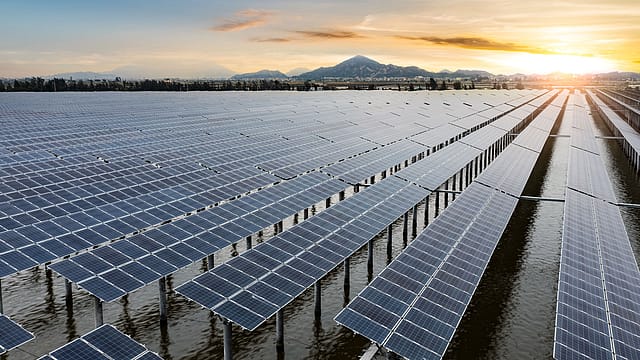India adds 7.2GW of solar capacity in the first half of 2022
ADVERTISEMENT

India added a record 7.2 gigawatt (GW) or 7200 megawatt (MW) of solar power in the first half of year 2022, so far the highest ever capacity addition and taking India's cumulative installed solar capacity to 57 GW.
The capacity addition in the first six months of 2022 is a record 59% increase when compared to 4.5 GW installed in the same period of last year, says a report of Mercom Capital, which tracks development of renewable energy globally.
"Even with mounting challenges from supply constraints and rising costs, India had its best quarter and first half for solar," observes Raj Prabhu, CEO of Mercom Capital Group.
Sources say the rejuvenation in capacity addition was triggered by completion of many projects which were either stalled or delayed due to Covid-19 stalemate. With another 57 GW of utility projects in the developmental stage and another 37 GW readying for auction, the country is likely to achieve the goal of installing 75GW of renewable capacity addition during the year, a target set by the Prime Minister Narendra Modi as part of celebrating the country's 75th year of independence. India had achieved the highest capacity addition of over 10GW in 2021. Capacity additions in this year are likely to surpass capacity additions during the last year, say sources.
In the second quarter of 2022, new installed capacity additions were to the tune of 3.5 GW, 23% more than the previous quarter and 82% higher than the capacity addition in the same quarter of last year.
While large scale solar accounted for 90% of the installations, the remaining 10% were from roof top solar. State of Rajasthan leads among solar capacity installations with over 13 GW of capacity, followed by Gujarat.
December 2025
The annual Fortune 500 India list, the definitive compendium of corporate performance, is out. This year, the cumulative revenue of the Fortune 500 India companies has breached $2 trillion for the first time. Plus, find out which are the Best B-schools in India.
The report observes that India's rooftop solar installations are showing a downward trend as the first half of year 2022 saw rooftop installations of 845MW, 2% less than the first six months in 2021. New rooftop solar installations in the second quarter of the year fell by 15% compared to the previous quarter and by 25% when compared to the same quarter a year ago. This was due to higher component costs resulting in an increase in the price of rooftop solar in the last six months, say sources.
